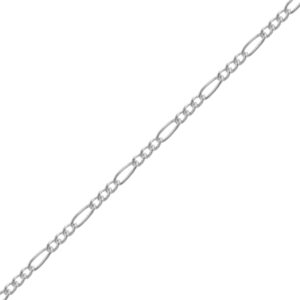Unlike most chains which feature similarly sized links the Figaro’s unique design element is its single larger elongated oval link followed by a number of small rounded links. This makes the chain easily recognisable as the repeating designs of other chains, from which the Figaro draws inspiration, are interrupted every so often by the Figaro’s elongated link.
Illustration of a scene from Mozart’s Opera ‘The Marriage of Figaro’
The name of this chain is thought to have come from the main character, Figaro, in the operas “The Barber of Seville” and “The Marriage of Figaro”. Both of which were extremely popular in Italy in the 18th century. Although the Italians were probably not the first to think of making such a design, its usage and popularity within Italy and connection to Italian opera meant the name stuck and still has a strong connection to the country and its jewellery industry today.
Figaro chains are most commonly associated with the curb chain in that they are both usually made of twisted and flattened links but this isn’t always the case and other variations still fall into the Figaro category. The multiple smaller links which make up the Figaro can be variations on curb, cable, trace or even belcher chains. These then contrast against the stretched link of the same design or an entirely different one. In this sense the Figaro can be thought of as a variation on existing chains rather than its own distinct chain design. The chain can even be found made up of single alternating short and long links further accentuating the differences between the sizes and designs but creating a simpler pattern overall. A benefit of the elongated link is that it can give the illusion of length, even with shorter chain sizes. The main point to remember though in what makes a Figaro chain is the differing number and shape of links throughout the chain’s length.

The Figaro can be seen as something of a mutant chain because of how the separate chain sections can look like two different designs randomly attached together. Despite this notion the Figaro’s segments don’t clash and actually complement each other with the final design appearing surprisingly visually balanced. Additionally, the Figaro is often diamond cut to highlight flattened sections or to draw even more attention to the contrasting links. Diversity can be found in the number of links between the distinctive longer sections as well as the shape and size of the links. The same variations on the chains that make up the Figaro are also transferred, such as octagonal links sometimes found on curb chains.
The Figaro has a strong association with men’s jewellery, again due to a connection with its possible Italian origins and in centuries gone by one could perhaps find rows of upper-class Italian gentlemen in the theatre wearing Figaro style chains while watching Figaro in action. The chain has since found its way into women’s fashion as well as remaining a consistently popular option for men today.

